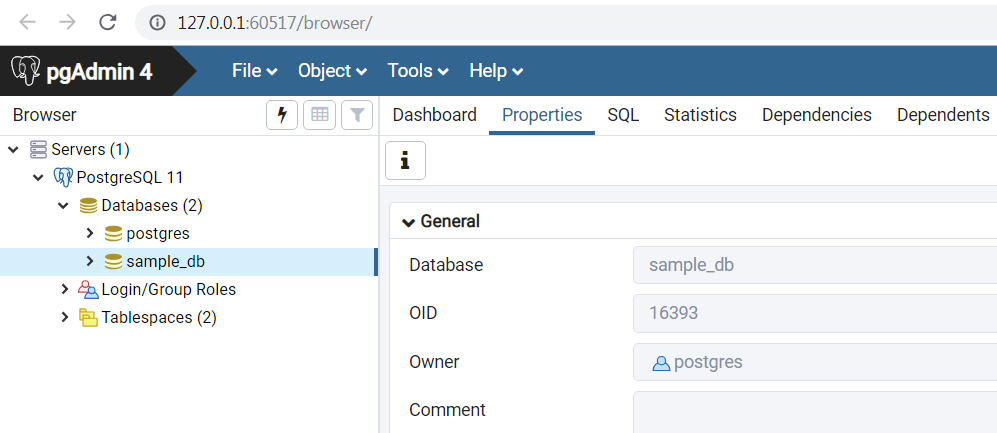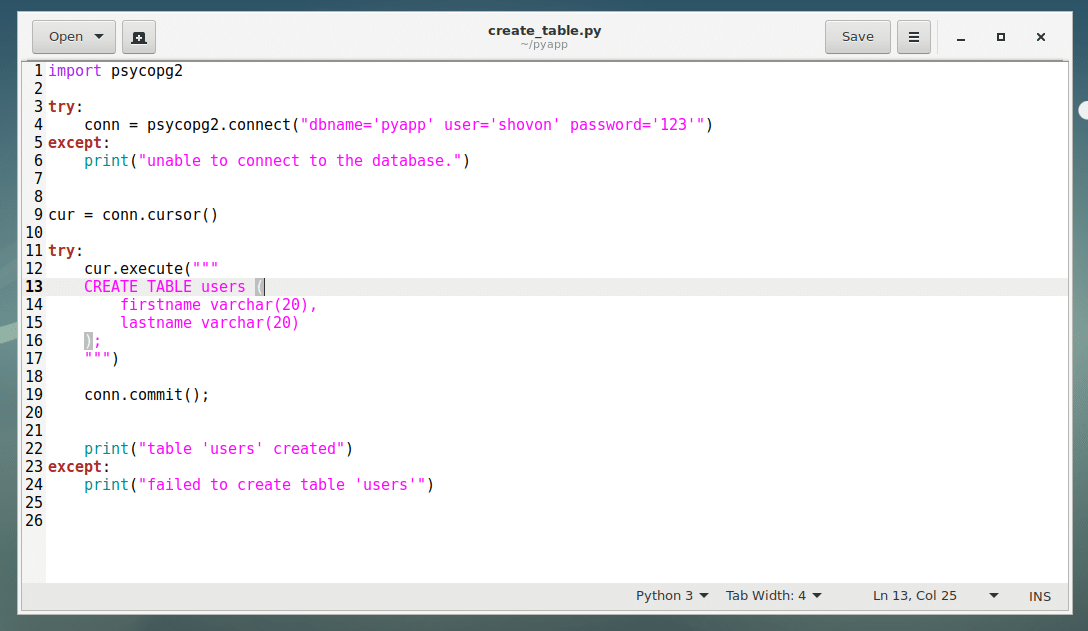

If you successfully enter employee details, you will be redirected to the show HTML page otherwise, you will be redirected to the insert HTML page.With the request parameter, we define the insert_emp view, which allows the user to input new employee information.from django.shortcuts import render, redirectĮmpDesignation = request.POSTĭata = Employee(EmpId=EmpId, EmpName=EmpName, EmpGender=EmpGender, EmpEmail=EmpEmail, EmpDesignation= EmpDesignation)
#Python postgresql code#
Insert_emp VIEW: Add the following code in the views.py file. In this section, we’ll learn to create a view function to insert employee details.


remove_emp: To delete existing employee.
#Python postgresql update#
#Python postgresql software#
The software has the look and feels of a desktop application whatever the runtime environment is, and vastly improves on pgAdmin III with updated user interface elements, multi-user/web deployment options, dashboards, and a more modern design.Read: Union operation on models Django Django CRUD create url pattern with PostgreSQL A desktop runtime written in NWjs allows it to run standalone for individual users, or the web application code may be deployed directly on a web server for use by one or more users through their web browser. PgAdmin 4 is a complete rewrite of pgAdmin, built using Python and Javascript/jQuery. In addition, you can download source tarballs and pgAgent for your servers to enable additional The pages in this section give additional details about each binary package available as well as more directĭownload links. Requires technical knowledge, we recommend installing binary packages whenever possible. Software is available in source and binary format from the PgAdmin is a free software project released under the PostgreSQL licence.


 0 kommentar(er)
0 kommentar(er)
